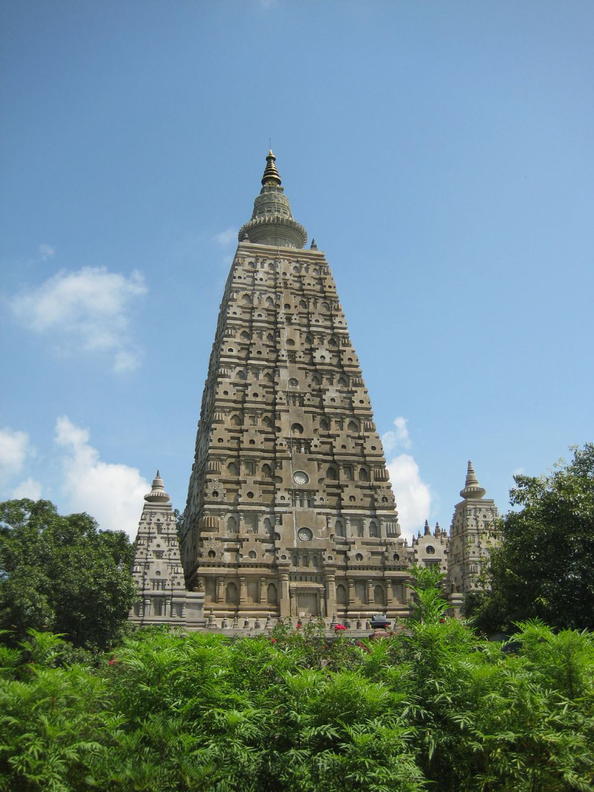Millions of diplomatic dollars being spent on India’s Look East policy don’t matter if major Buddhist sites aren’t protected. We can’t be coveting only the Buddhism tourism dollar; we should be spending money to secure these treasures of global heritage
It’s early morning Sunday and political knives are out for Bihar chief minister Nitish Kumar following the attack on the Mahabodhi complex.
Predictably, Gujarat chief minister Narendra Modi has been first off the block, tweeting early morning on the blasts.
Though Modi steered clear of blaming the Bihar CM, it hasn’t taken much time for the predictable cursing of Kumar by Modi’s 1.7 million follows.
Surely, as the chief minister of the state, securing the holy site is Kumar’s responsibility. But given the current state of training and discipline of Bihar Police, it is useful to remember the best the CM has is a Special Task Force (STF), already charged with the job since last year.
The point to be made here is that as a Unesco World Heritage Site, the complex is no different than the Taj Mahal, and therefore must be protected by the elite Central Industrial Security Force (CISF).
Rather than make jurisdictional issue of it, Kumar himself should request for that.
Here’s why:
The Mahabodhi Temple Complex is one of the four holy sites related to the life of the Lord Buddha, and particularly to the attainment of Enlightenment. The first temple was built by Emperor Asoka in the 3rd century BC, and the present temple dates from the 5th or 6th centuries. It is one of the earliest Buddhist temples built entirely in brick, still standing in India, from the late Gupta period.
The criteria used by UNESCO to bestow such a status on the complex included
(i): The grand 50m high Mahabodhi Temple of the 5th-6th centuries being of immense importance, as one of the earliest temple constructions existing in the Indian subcontinent. It is one of the few representations of the architectural genius of the Indian people in constructing fully developed brick temples in that era.
(ii): The Mahabodhi Temple is one of the few surviving examples of early brick structures in India, has had significant influence in the development of architecture over the centuries.
(iii): The site of the Mahabodhi Temple provides exceptional records for the events associated with the life of Buddha and subsequent worship, particularly since Emperor Asoka built the first temple, the balustrades, and the memorial column.
(iv): The present Temple is one of the earliest and most imposing structures built entirely in brick from the late Gupta period. The sculpted stone balustrades are an outstanding early example of sculptural reliefs in stone.
(vi): The Mahabodhi Temple Complex in Bodh Gaya has direct association with the life of the Lord Buddha, being the place where He attained the supreme and perfect insight.
Money spent on CISF deployment is India’s duty towards the world at large. A visit to http://whc.unesco.org/en/list/1056 tells us that the Mahabodhi Temple, is one of the few surviving examples of early brick structures in India, has had significant influence in the development of architecture over the centuries. balustrades, and the memorial column. The present temple is one of the earliest and most imposing structures built entirely from brick in the late Gupta period. The sculpted stone balustrades are an outstanding early example of sculptural reliefs in stone.
The Temple Complex has direct associations with the life of the Lord Buddha (566-486 BC) as the place where in 531 BC he attained the supreme and perfect insight while seated under the Bodhi Tree. It provides exceptional records for the events associated with his life and for subsequent worship, particularly since Emperor Asoka made a pilgrimage to this spot around 260 BC and built the first temple at the site of the Bodhi Tree. The Mahabodhi Temple Complex is located in the very heart of the city of Bodh Gaya. The site consists of the main temple and six sacred places within an enclosed area, and a seventh one, the Lotus Pond, just outside the enclosure to the south.
The most important of the sacred places is the giant Bodhi Tree (Ficus religiosa ). This tree is to the west of the main temple and is supposed to be a direct descendant of the original Bodhi Tree under which the Buddha spent his First Week and where he had his enlightenment. To the north of the central path, on a raised area, is the Animeshlochan Chaitya (prayer hall) where the Buddha is believed to have spent the Second Week. The Buddha spent the Third Week walking 18 paces back and forth in an area called Ratnachakrama (Jewelled Ambulatory), which lies near the north wall of the main temple. The spot where he spent the Fourth Week is Ratnaghar Chaitya, located to the north-east near the enclosure wall. Immediately after the steps of the east entrance on the central path there is a pillar which marks the site of the Ajapala Nigrodh Tree, under which Buddha meditated during his Fifth Week, answering the queries of Brahmins. He spent the Sixth Week next to the Lotus Pond to the south of the enclosure, and the Seventh Week under the Rajyatana Tree currently marked by a tree.
The Main Temple is built in the classical style of Indian temple architecture. It has a low basement with mouldings decorated with honeysuckle and geese design. Above this is a series of niches containing images of the Buddha. Further above there are mouldings and chaitya niches, and then the curvilinear shikhara or tower of the temple surmounted by amalaka and kalasha (architectural features in the tradition of Indian temples). At the four corners of the parapet of the temple are four statues of the Buddha in small shrine chambers. A small tower is built above each of these shrines. The temple faces east and consists of a small forecourt in the east with niches on either side containing statues of the Buddha.
Next to the Bodhi Tree there is a place with a Buddha statue that stands on part of the polished sandstone Vajrasana (Diamond Throne), originally installed by Emperor Asoka to mark the spot where the Buddha sat and meditated. Granite pillars were added to enlarge the area in the 5th-6th centuries BC. Further up the central path towards the main temple to the south is a small shrine with a standing Buddha in the back and with the footprints (Padas ) of the Buddha carved on black stone, dating from the 3rd century BC, when Emperor Asoka declared Buddhism to be the official religion of the state. Further on the path towards the main temple is a building housing several statues of Buddha and Bodhisattvas.
Millions of believers in our eastern neighbourhood would expect India to rise to the challenge. A more detailed review of all 29 of India’s Unesco heritage sites must also be mounted.

